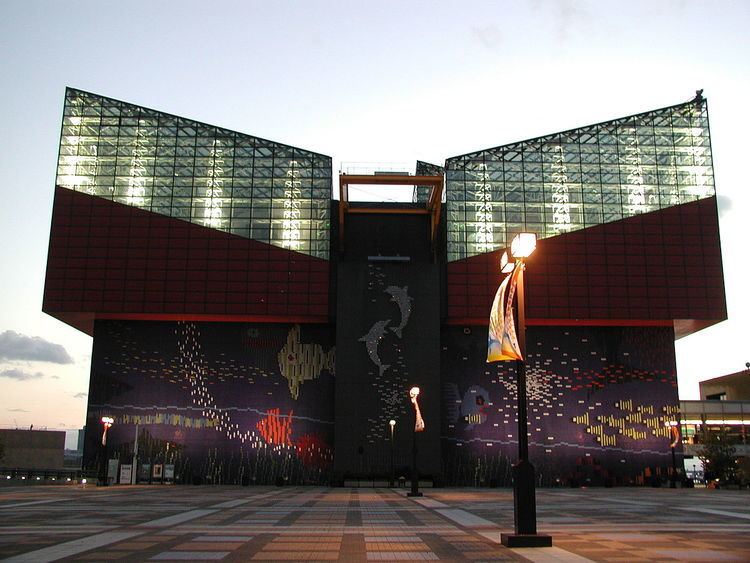Date opened May 1990 No. of animals 29,000 Opened May 1990 Number of species 470 | No. of species 470 Phone +81 6-6576-5501 Architect Peter Chermayeff | |
 | ||
Land area 26,570 square metres (286,000 sq ft) Volume of largest tank 5,400 cubic metres (190,699 cu ft) Hours Open today · 10AM–8PMMonday10AM–8PMTuesday10AM–8PMWednesday10AM–8PMThursday10AM–8PMFriday10AM–8PMSaturday10AM–8PMSunday10AM–8PMSuggest an edit Similar Mount Tenpō, Universal Studios Japan, Tsūtenkaku, Dōtonbori, Tempozan Ferris Wheel Profiles | ||
Osaka aquarium kaiyukan tour video japan guide
The Osaka Aquarium Kaiyukan (海遊館, Kaiyūkan, known as the Kaiyukan) is an aquarium located in the ward of Minato in Osaka, Japan, near Osaka Bay. It is one of the largest public aquariums in the world, and is a member of the Japanese Association of Zoos and Aquariums (JAZA).
Contents
- Osaka aquarium kaiyukan tour video japan guide
- Osaka aquarium kaiyukan tour
- Exhibits
- Tunnel Tank
- Japanese Forests
- Aleutian Islands
- Monterey Bay
- Panama Bay
- Ecuadorian Jungle
- Antarctica
- Tasmanian Sea
- Great Barrier Reef
- The Pacific Ocean
- Seto Inland Sea
- The Giant Kelp Forest
- Chilean Rocks
- Cook Strait
- Japanese Trench
- Deep sea Zone
- Jellyfish Area
- Architecture
- References
The aquarium is about a five-minute walk from Osakako Station on the Osaka Municipal Subway Chūō Line, and is next to the Tempozan Ferris Wheel.
Osaka aquarium kaiyukan tour
Exhibits
The walk-through aquarium displays marine life in several habitats comprising 27 tanks in 16 main exhibits with a total volume of 10,941 tons of water. The habitats are from the Ring of Fire area of the Pacific Ocean. The largest tank is 9 metres (30 ft) deep and holds 5,400 cubic metres (190,699 cu ft) of water and a variety of fish including manta rays and a whale shark.
The tanks used in the aquarium are made of 314 tonnes (346 tons) of acrylic glass. The largest single pane measures six meters by five meters by thirty centimeters and weighs roughly 10 tons. At the thicknesses used, regular glass would be unwieldy and would not have the desired transparency.
The themes, displays and their respective organisms at Kaiyukan are as follows;
Tunnel Tank
Japanese Forests
Aleutian Islands
Monterey Bay
Panama Bay
Ecuadorian Jungle
Antarctica
Tasmanian Sea
Great Barrier Reef
The Pacific Ocean
This is largest tank in the aquarium.
Seto Inland Sea
The Giant Kelp Forest
Chilean Rocks
Cook Strait
Japanese Trench
Deep sea Zone
Jellyfish Area
Architecture
The Kaiyukan’s conceptual design, architecture, and exhibit design was led by Peter Chermayeff of Peter Chermayeff LLC while at Cambridge Seven Associates.
